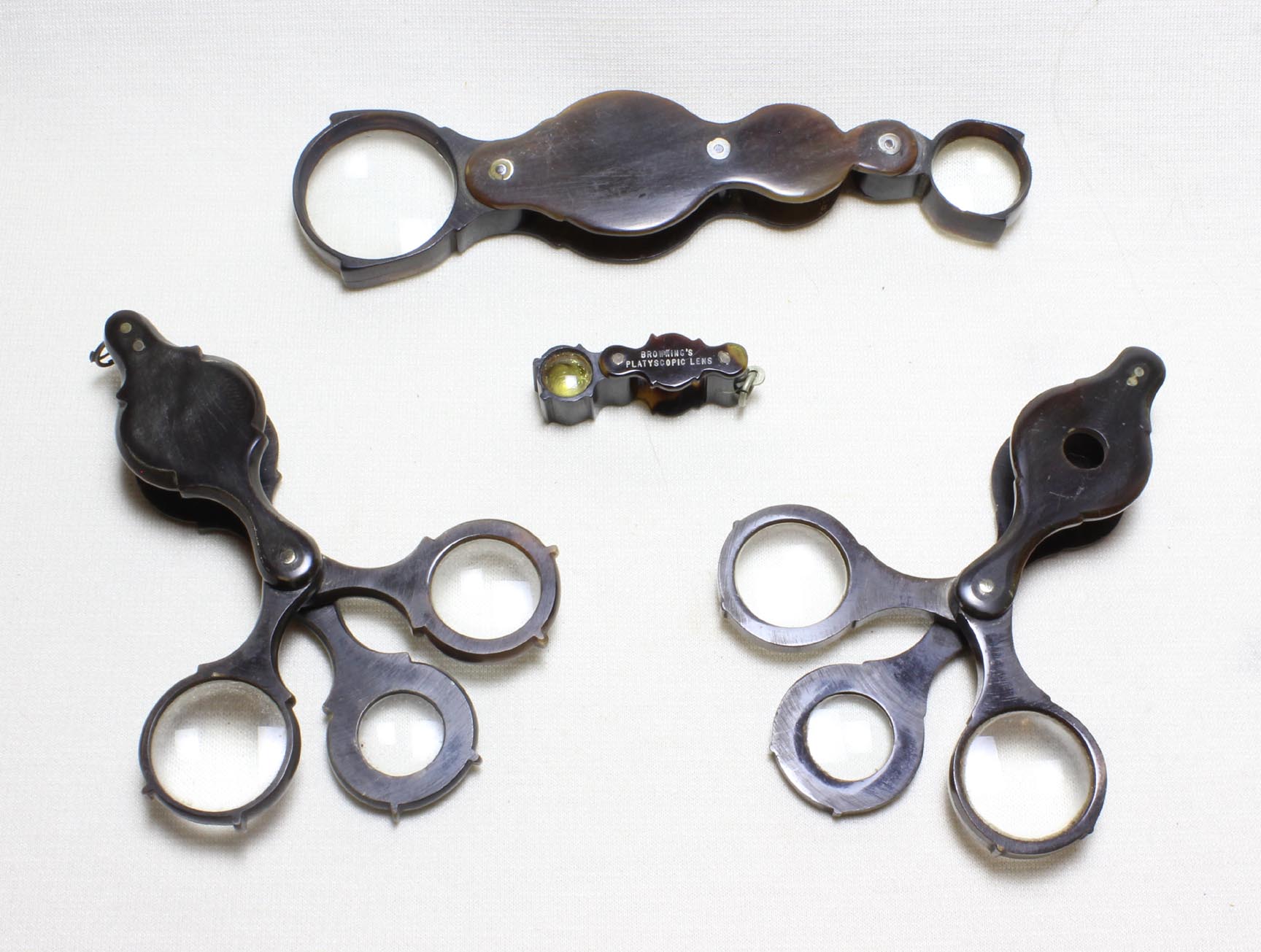
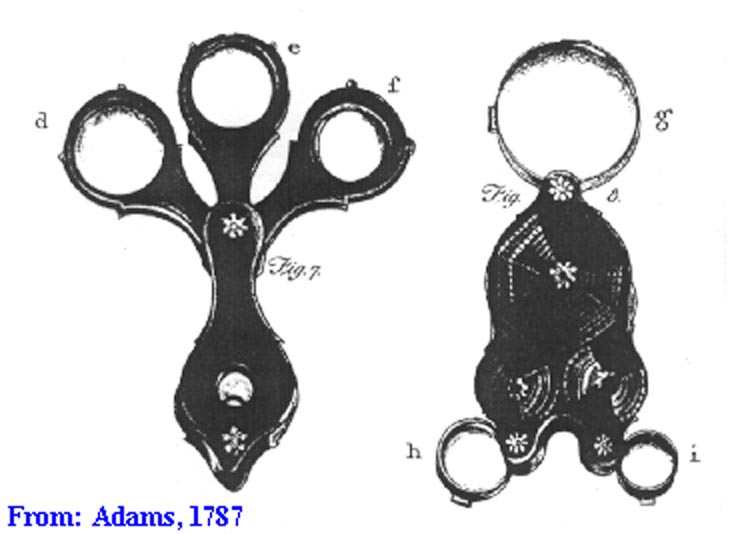 Folding pocket-sized single lens magnifiers have been sold for centuries and are still sold today. Early on, magnifiers of the type shown on this page were called 'botanical' magnifiers. Starting in the early 20th century they were often referred to as 'Loupes' although the instrument used by Jewelers is more commonly referred to as a loupe. As can be seen in the illustration to the left, magnifiers very similar to the later ones shown on this web page were sold by George Adams, and were pictured in the plates for his 'Essays on the Microscope' of 1787. They were likely housed in cattle horn.
Folding pocket-sized single lens magnifiers have been sold for centuries and are still sold today. Early on, magnifiers of the type shown on this page were called 'botanical' magnifiers. Starting in the early 20th century they were often referred to as 'Loupes' although the instrument used by Jewelers is more commonly referred to as a loupe. As can be seen in the illustration to the left, magnifiers very similar to the later ones shown on this web page were sold by George Adams, and were pictured in the plates for his 'Essays on the Microscope' of 1787. They were likely housed in cattle horn.
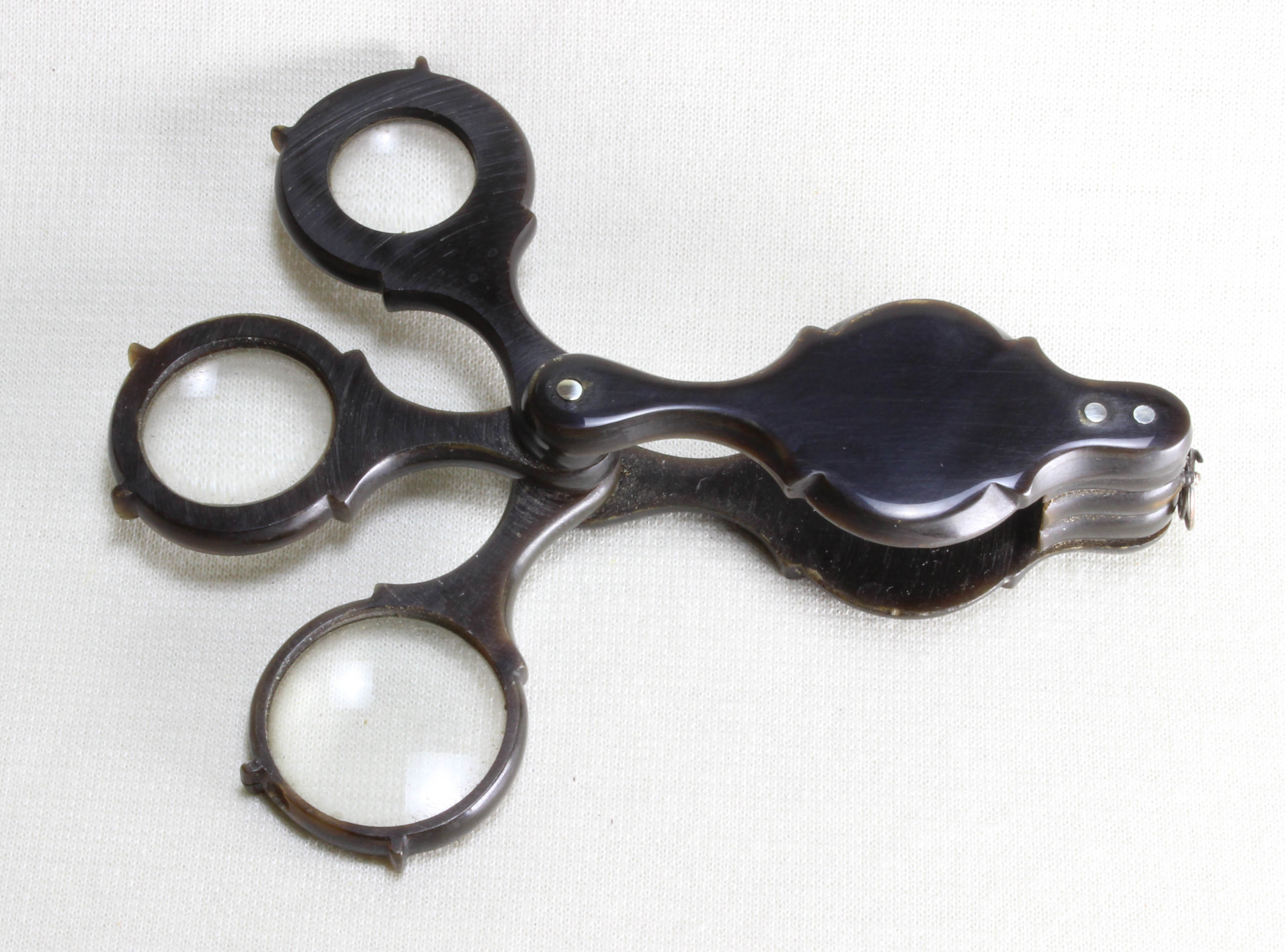
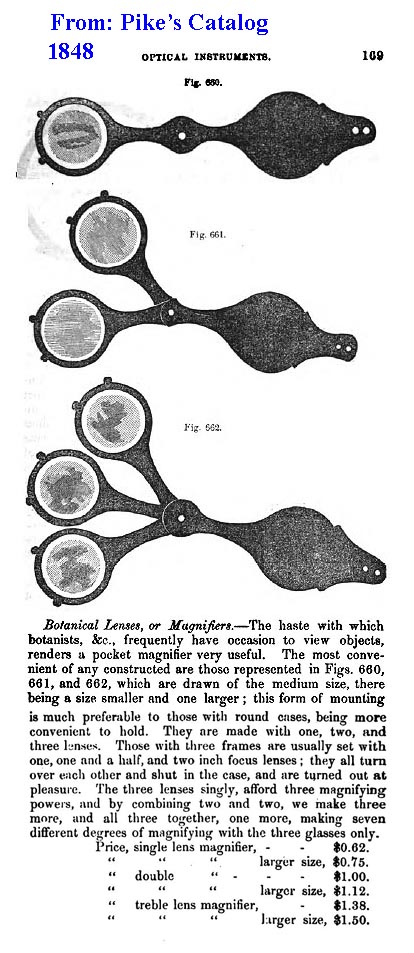
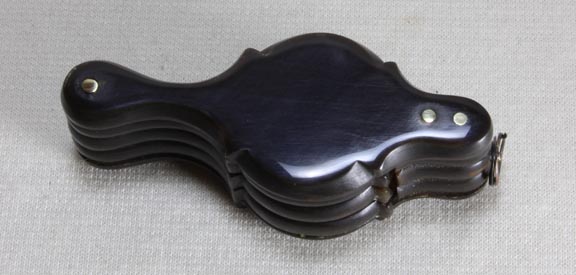
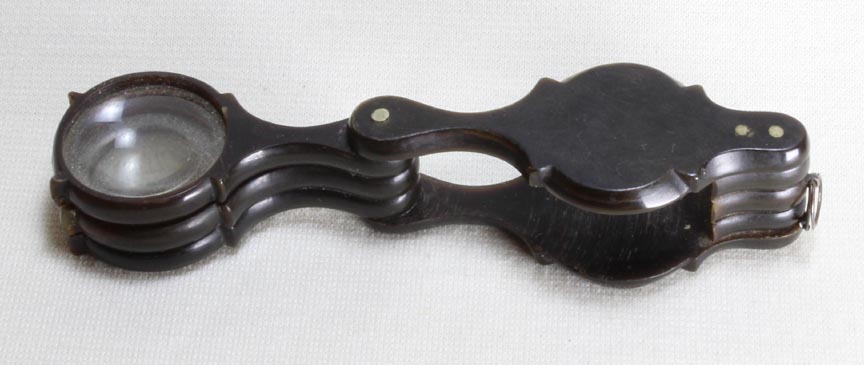
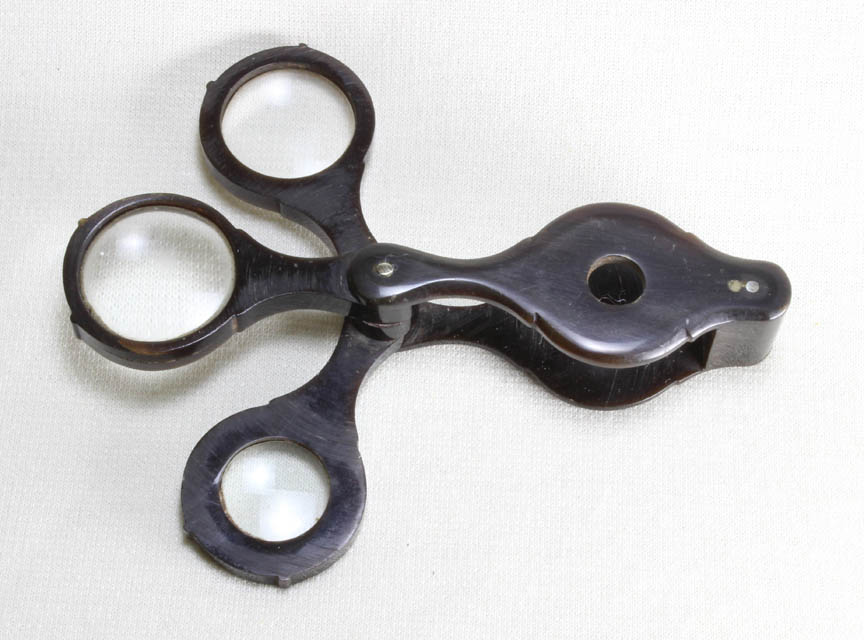
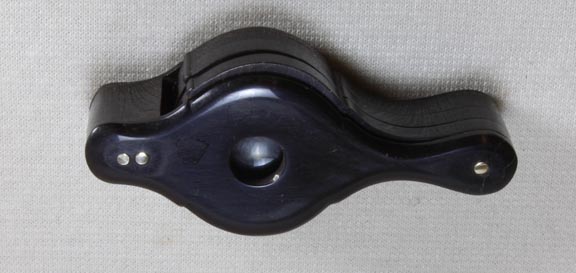
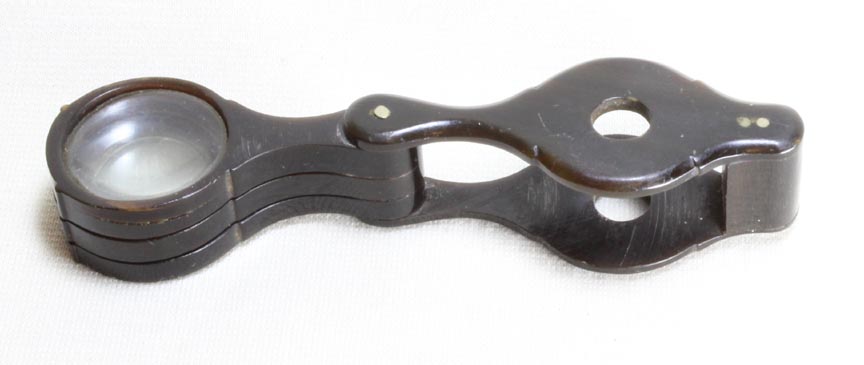
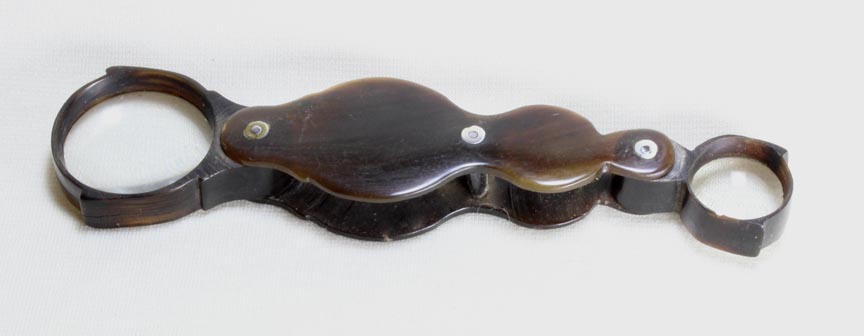
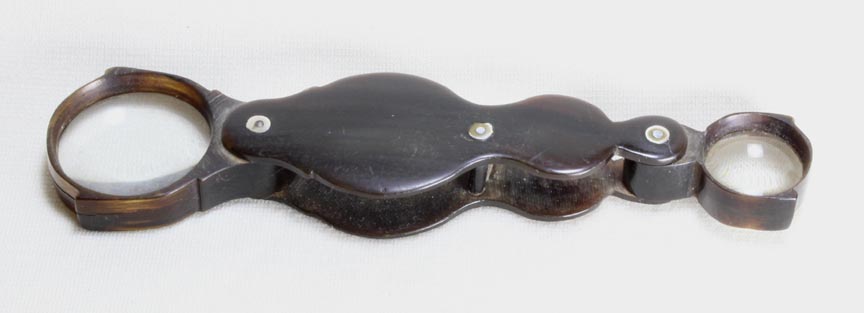
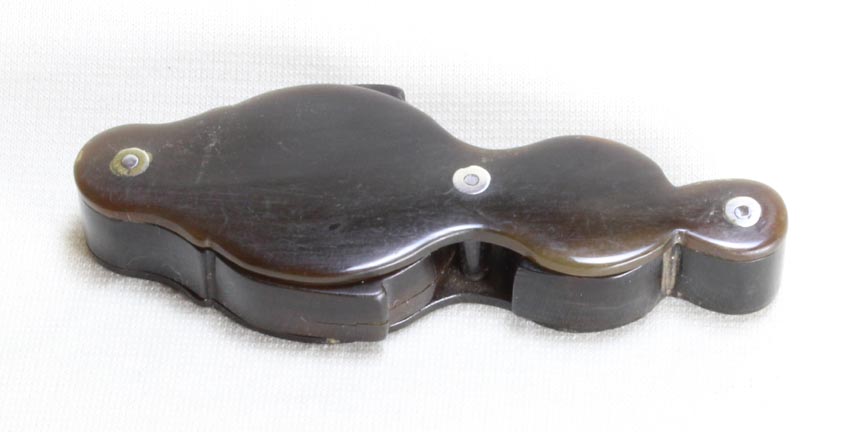
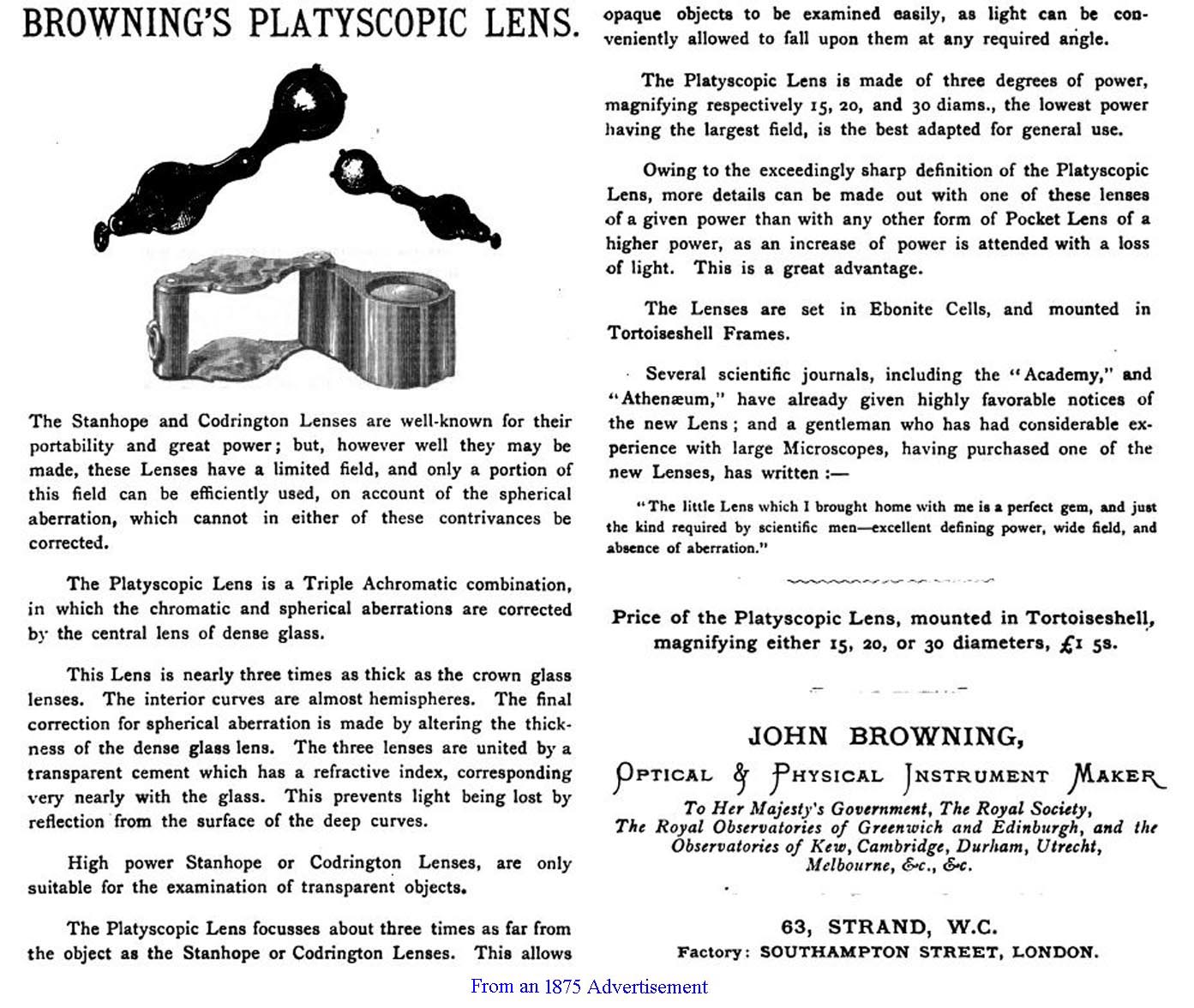
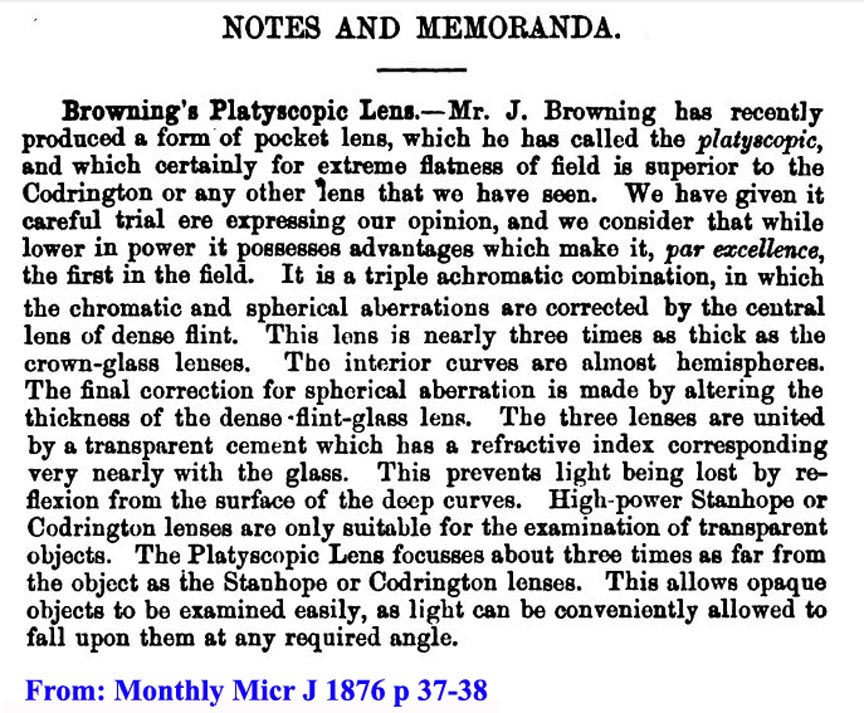
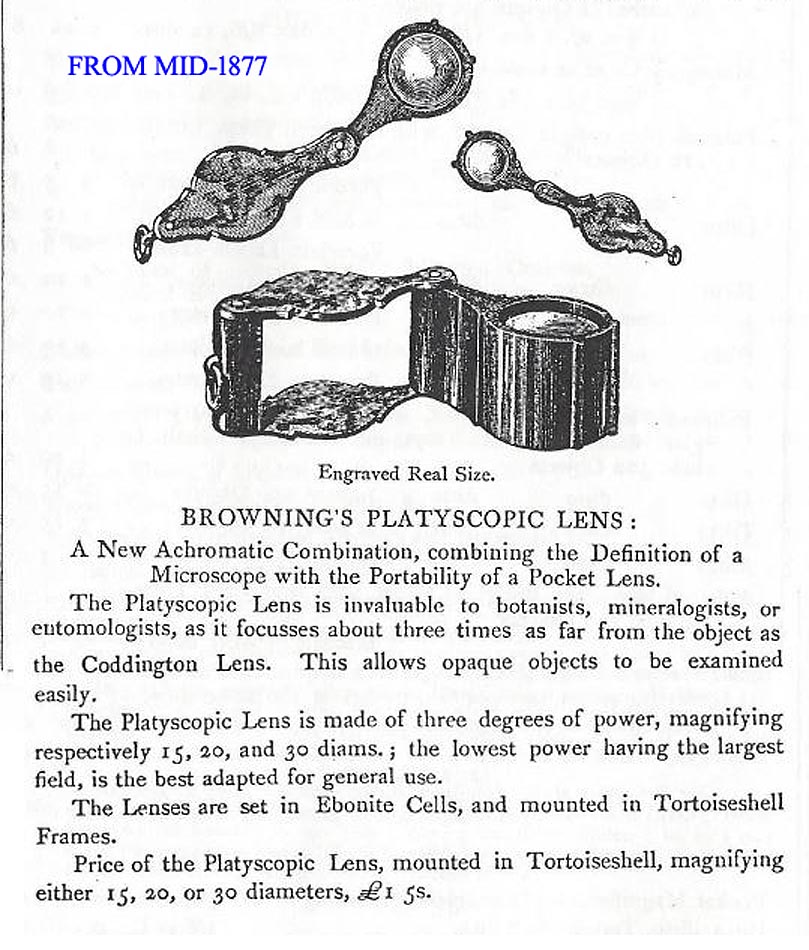
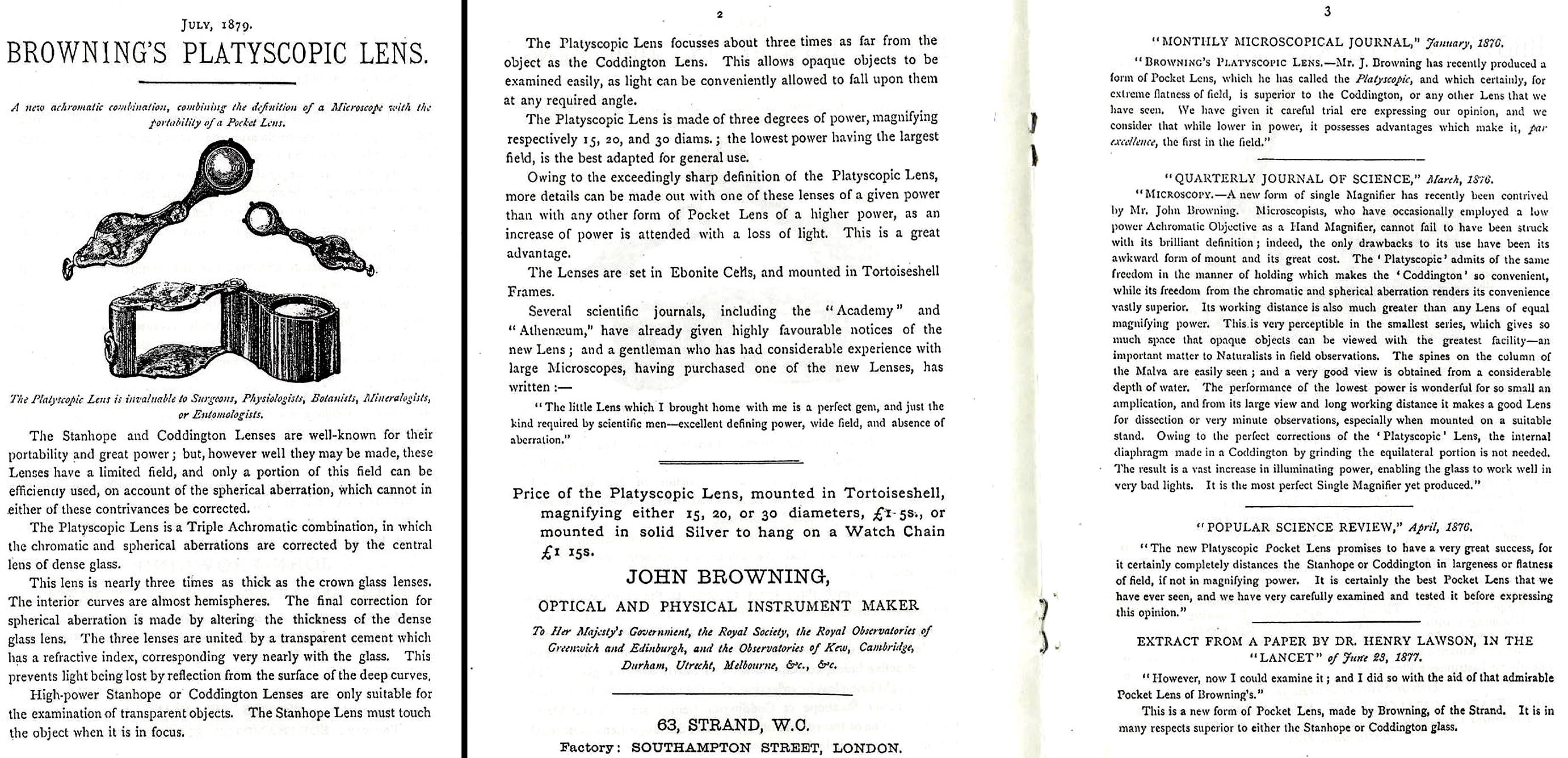
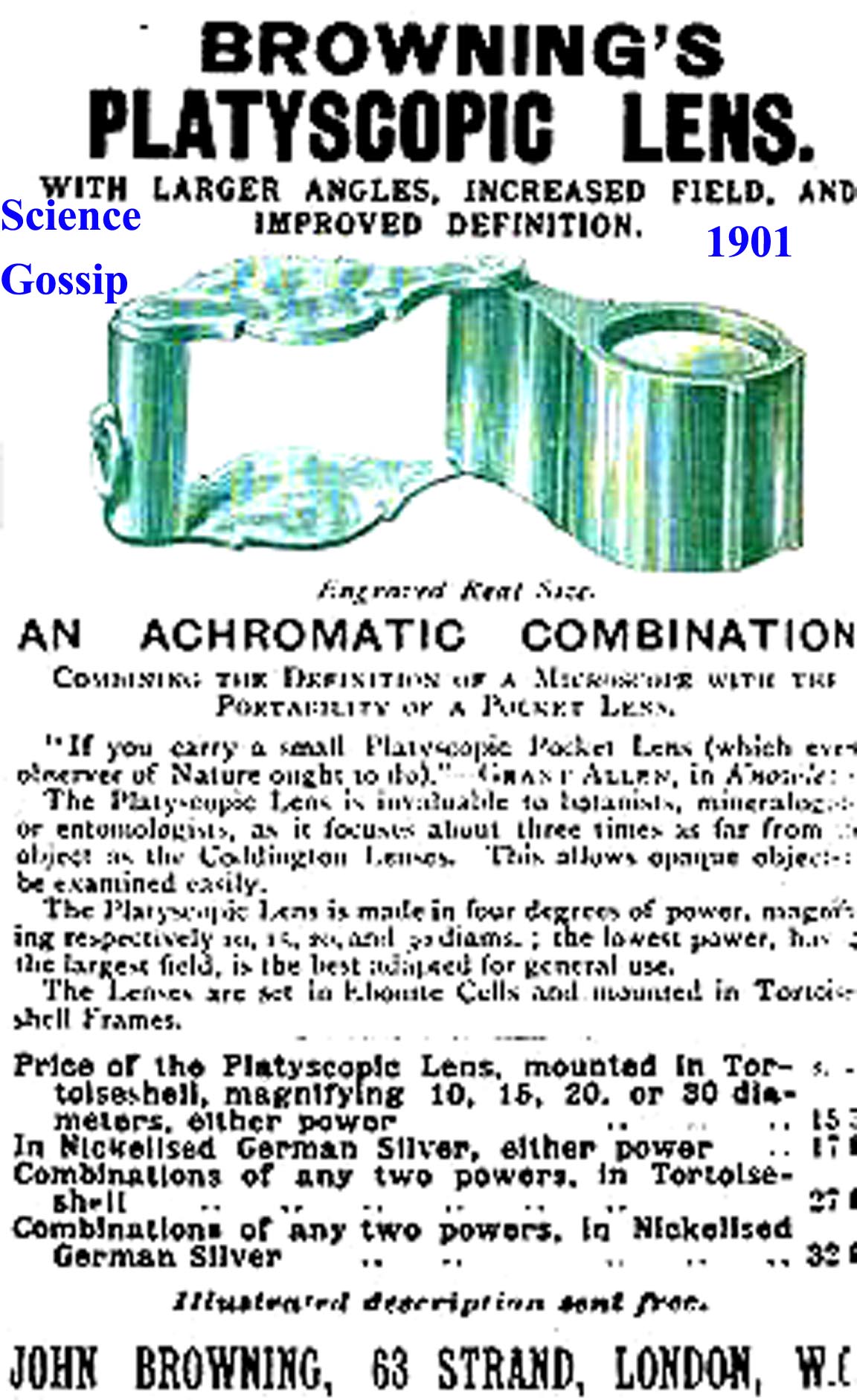
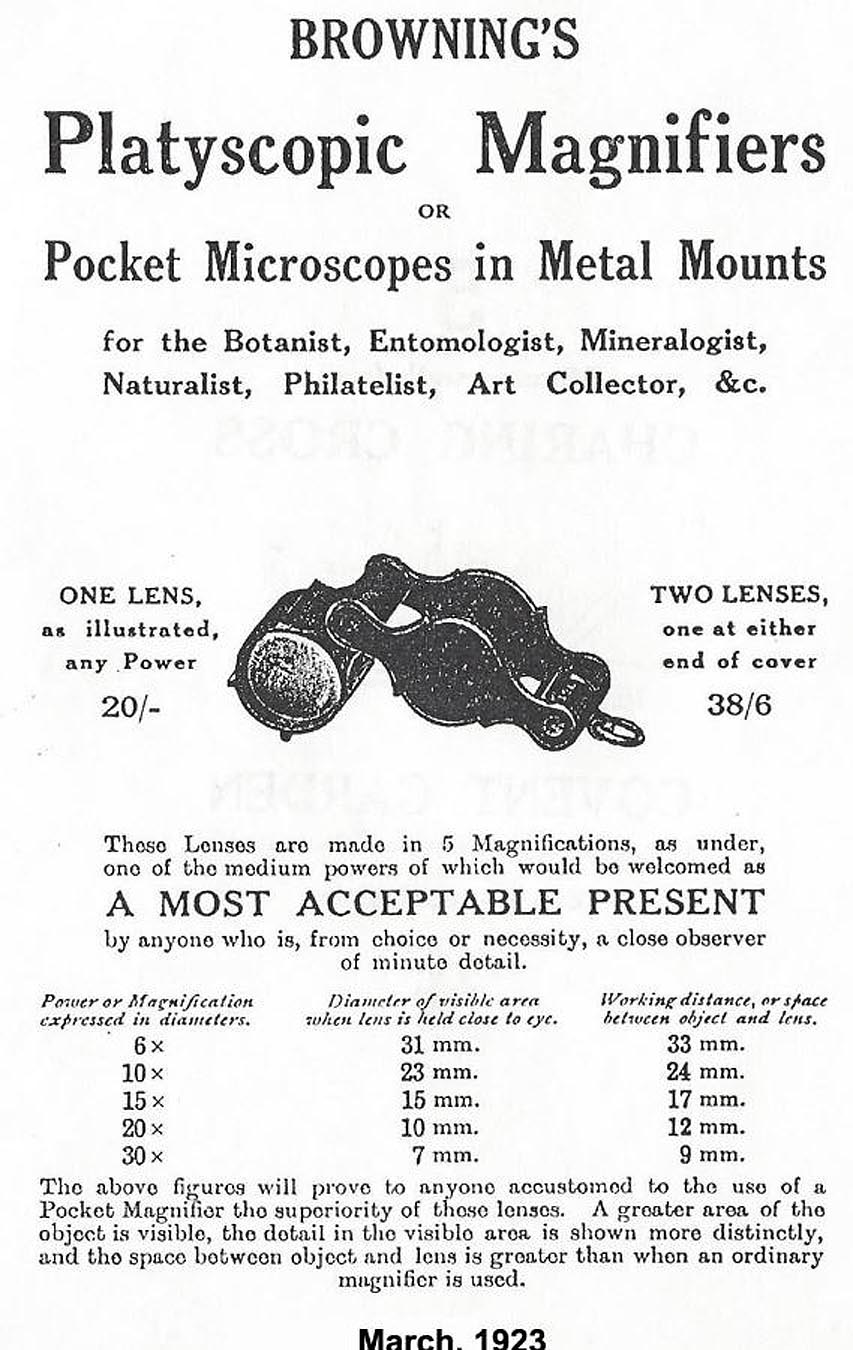
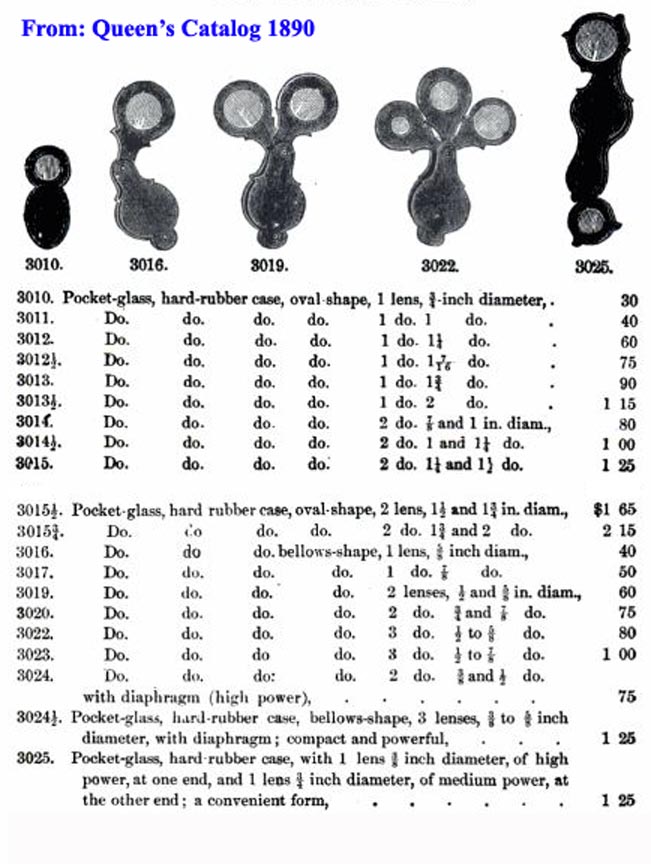 In 1880, Meyrowitz of New York City sold a similar magnifier 'cased in hard rubber.' In 1890, the Queen Catalog offered a variety of 'Pocket Glasses in Hard Rubber', but also offered an Achromatic Triplet in either *tortoise shell or, for higher prices, in nickel plated, silver or even gold cases, and in 1915, G.W. Huntley of Chicago was still selling 'Rubber Case Magnifiers'.
In 1880, Meyrowitz of New York City sold a similar magnifier 'cased in hard rubber.' In 1890, the Queen Catalog offered a variety of 'Pocket Glasses in Hard Rubber', but also offered an Achromatic Triplet in either *tortoise shell or, for higher prices, in nickel plated, silver or even gold cases, and in 1915, G.W. Huntley of Chicago was still selling 'Rubber Case Magnifiers'. 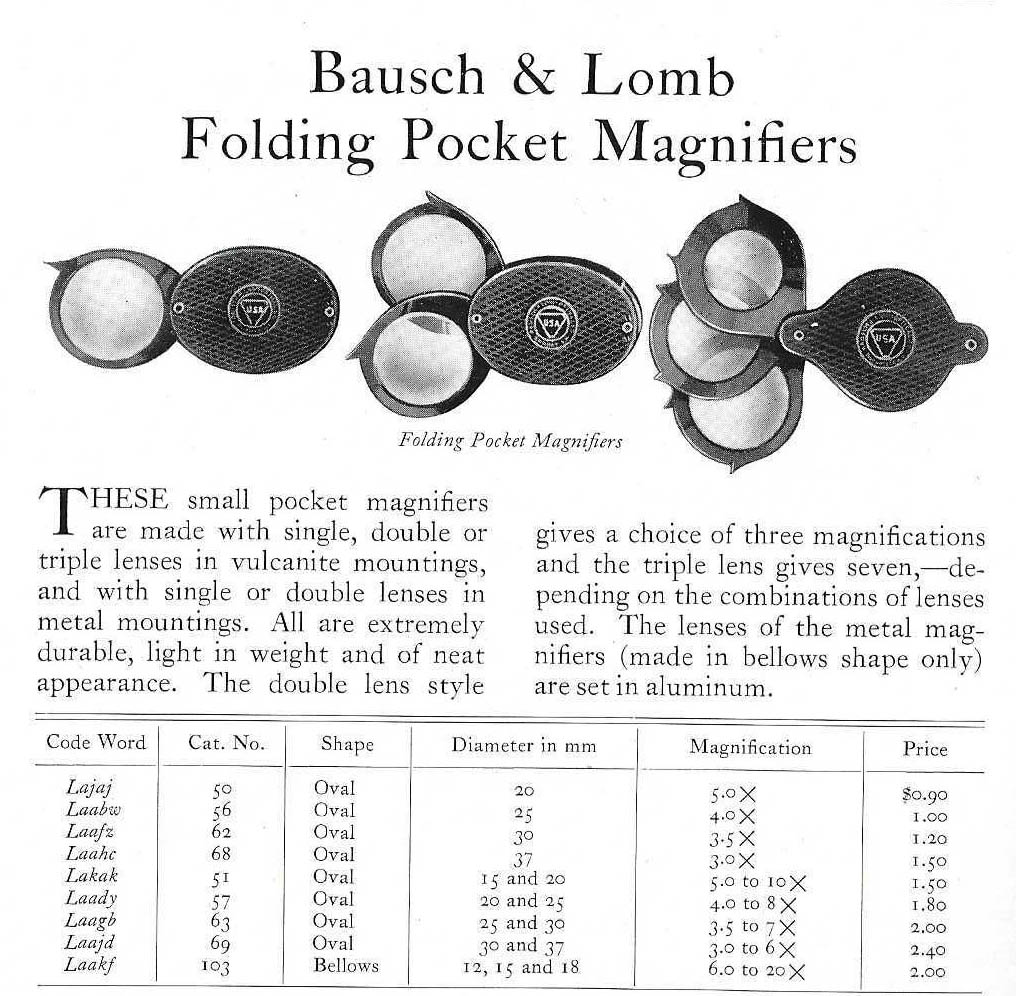 Hard rubber-cased folding magnifiers of this basic form were still being sold in 1929 by Bausch & lomb, albeit with a slightly more modern look. Today they are sold in plastic cases. B & L continued to make these in the later 20th century, and continues to sell Coddington Magnifiers as well as Hastings Triplets to this day.
Hard rubber-cased folding magnifiers of this basic form were still being sold in 1929 by Bausch & lomb, albeit with a slightly more modern look. Today they are sold in plastic cases. B & L continued to make these in the later 20th century, and continues to sell Coddington Magnifiers as well as Hastings Triplets to this day. 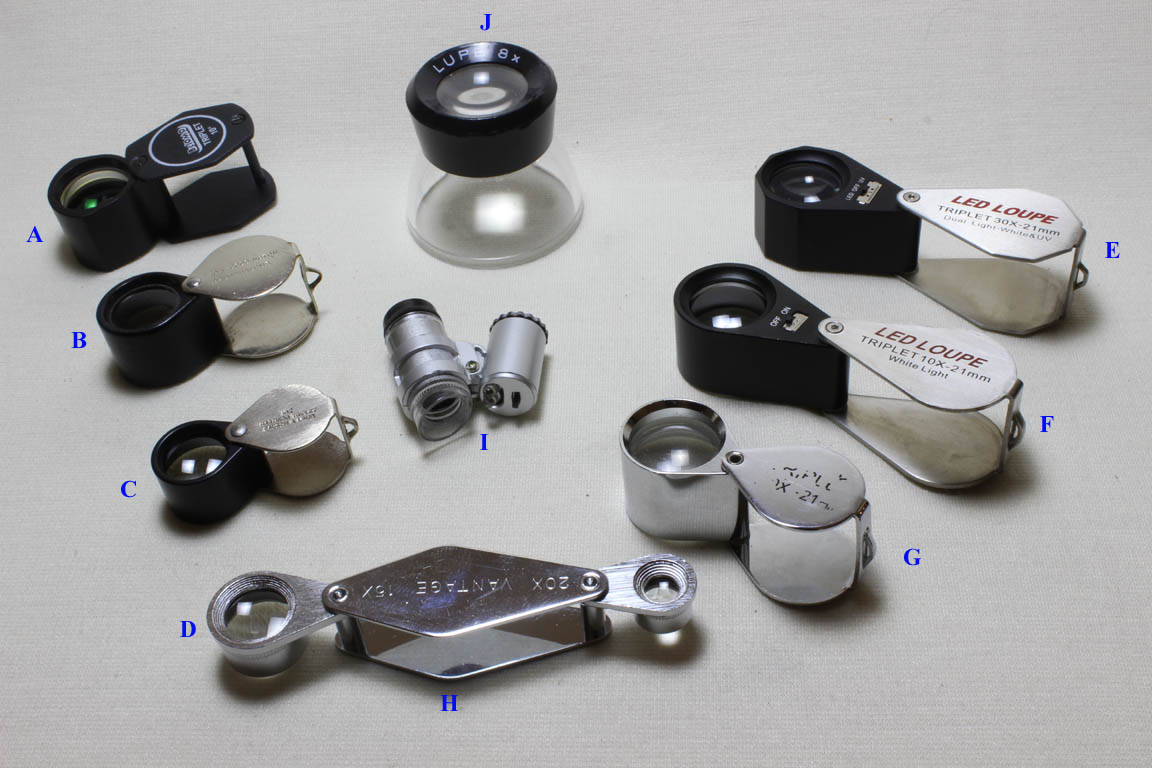 From the twentieth century and now in the twenty first century, folding pocket magnifiers with simple lenses, Coddington lenses, and Triplet lenses are still sold. Today they usually have a chrome or nickel plated case and a plastic lens casing, but some are cased entirely in plastic. Some newer models (e.g. E, F and I), even provide built-in miniaturized illumination with LEDs and button batteries. Some, like H, provide a variety of lens choices. Bausch & Lomb still makes the basic three-lens combination magnifiers, Coddington Lenses (B), and Hastings triplets(C). The Belomo brand from Belarus(A) makes an an even better excellent triplet magnifier as well. These triplets are achromatic flat field magnifiers but depending on magnification can still suffer from some degree of aberration or distortion, especially outside the center of the field and especially at higher powers. During the twentieth century, Agfa, a company specializing in film and photography apparatus marketed the 'AGFA LUPE". This magnifier (J) was made completely of plastic, and despite that delivers descent views at the 8X low power. A small 30X microscope with a built in LED side illuminator (I) has a clear plastic side rest to allow it to be held steady at this high power while it is touching the surface next to the object being observed. It has a focusable lens system and the entire thing is cased in plastic. These are available from China at rediculously low prices. The 30X triplet(E), not only has a built-in white light source, but also UV to allow further detailed evaluation of gemstones and other florescescing materials. The magnifiers seen here range in price from about $4 to about $45 (2016 prices). Nikon and Zeiss also market triplets costing up to about $100 each without built-in lighting. Not having the courage to buy one of these, I cannot say if they are superior to any of the others here, especially the Belomo, which for about $32 is hard to beat.
From the twentieth century and now in the twenty first century, folding pocket magnifiers with simple lenses, Coddington lenses, and Triplet lenses are still sold. Today they usually have a chrome or nickel plated case and a plastic lens casing, but some are cased entirely in plastic. Some newer models (e.g. E, F and I), even provide built-in miniaturized illumination with LEDs and button batteries. Some, like H, provide a variety of lens choices. Bausch & Lomb still makes the basic three-lens combination magnifiers, Coddington Lenses (B), and Hastings triplets(C). The Belomo brand from Belarus(A) makes an an even better excellent triplet magnifier as well. These triplets are achromatic flat field magnifiers but depending on magnification can still suffer from some degree of aberration or distortion, especially outside the center of the field and especially at higher powers. During the twentieth century, Agfa, a company specializing in film and photography apparatus marketed the 'AGFA LUPE". This magnifier (J) was made completely of plastic, and despite that delivers descent views at the 8X low power. A small 30X microscope with a built in LED side illuminator (I) has a clear plastic side rest to allow it to be held steady at this high power while it is touching the surface next to the object being observed. It has a focusable lens system and the entire thing is cased in plastic. These are available from China at rediculously low prices. The 30X triplet(E), not only has a built-in white light source, but also UV to allow further detailed evaluation of gemstones and other florescescing materials. The magnifiers seen here range in price from about $4 to about $45 (2016 prices). Nikon and Zeiss also market triplets costing up to about $100 each without built-in lighting. Not having the courage to buy one of these, I cannot say if they are superior to any of the others here, especially the Belomo, which for about $32 is hard to beat.